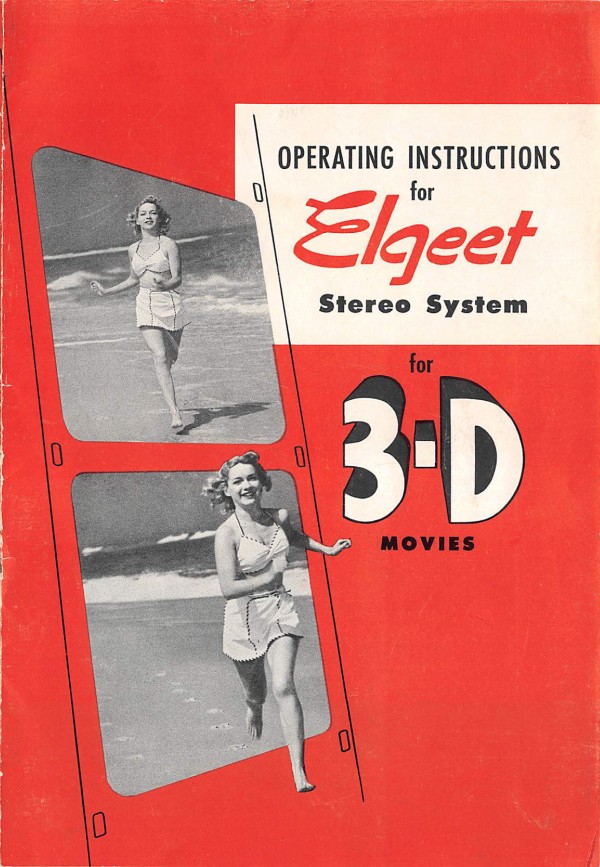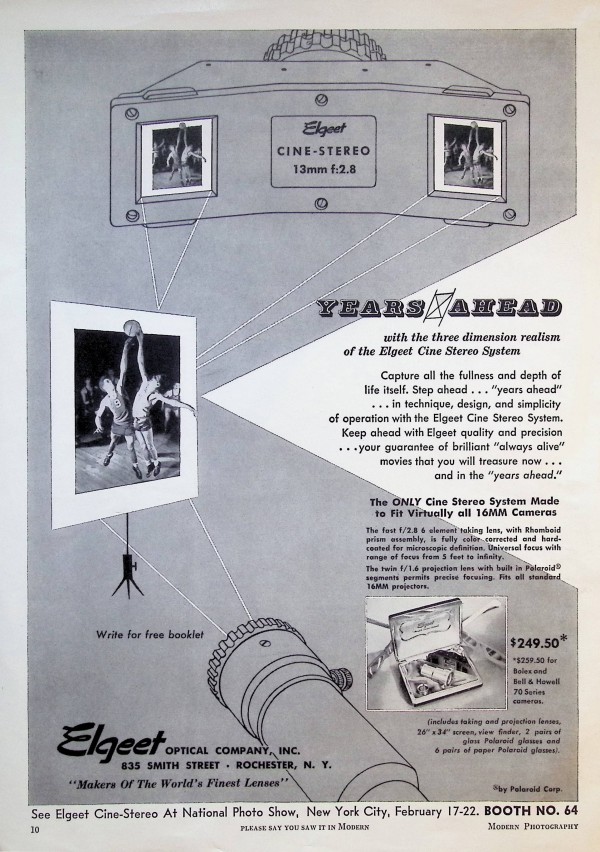A 16mm single-strip stereoscopic format for amateur filmmakers.
Film Explorer
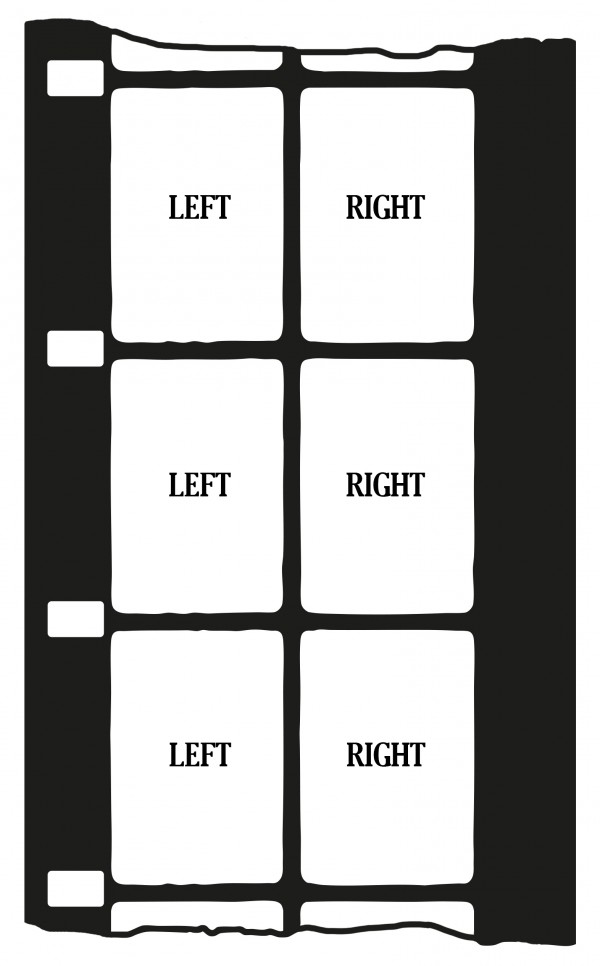
Left- and right-eye 3-D images were recorded onto 16mm reversal film, side-by-side within the standard 16mm frame. As a result, each image was portrait orientation.
Design by Christian Zavanaiu.
Identification
Unknown
Primarily 16 or 24 fps
1
Any color, or B/W, stock available at the time was compatible with this format. However, to date, only Kodachrome examples have been located.
None
Unknown
Compatible with any emulsion type, color or B/W; primarily reversal, for amateur use.
History
The Elgeet Optical Company, founded in 1946, specialized in the manufacture of photographic lenses for cameras – including motion-picture cameras – and photographic enlargers. (The company survives to this day under the name Navitar, which was the name for its specialized lenses designed for naval tracking.) Elgeet's stereo system for 16mm cameras was announced in August 1953, at the height of the theatrical 3-D craze. Similar to the previously released Nord and Bolex stereo systems, the Elgeet system allowed stereo pairs to be photographed on a single strip of 16mm film. Unlike the other systems, the Elgeet camera lens could be mounted on any camera that accepted standard C-mount lenses, making it a versatile and economical proposition. Like the Nord and Bolex systems, Cine-Stereo bisected the normal 16mm frame in half vertically – the resulting tall and narrow 3-D image was one of the drawbacks of these amateur systems. The entire system consisted of the camera and projector lenses, appropriate camera viewfinder, eight pairs of Polaroid glasses, and a 24 in x 36 in (60.96cm x 91.44cm) aluminized screen: all for $249.50 (roughly equivalent to $3,000 today). The cost was $10 higher for users with Bolex and Bell & Howell cameras, presumably due to the need for a different viewfinder. In spite of its value as an affordable, complete system, the Elgeet Cine-Stereo’s use appears to have been extremely limited – possibly because it was a latecomer to the amateur stereo market. Surviving examples are exceedingly rare, with no documented use in commercial, or industrial, film production – unlike the Bolex stereo system.
Selected Filmography
An amateur film made three decades after Elgeet Cine-Stereo equipment was first launched.
An amateur film made three decades after Elgeet Cine-Stereo equipment was first launched.
Technology
The Elgeet stereo camera attachment consisted of a six-element f/2.8 lens with a focal length of 13mm. The lens was fixed focus, from 5 ft (1.52m) to infinity. Light entered through two apertures in front, passing through a rhomboid prism assembly, and then through the lens system: forming narrow, portrait-oriented left and right images side-by-side on the standard 16mm frame.
The projection lens assembly featured twin f/1.6 lenses, with internal polarizing filters, and an adjustment knob allowing for proper superimposition of the left and right panels when projected. Elgeet also offered a 24 in x 36 in (60.96cm x 91.44cm) tripod screen, with a metalized surface to maintain polarization. As with the other systems, viewing glasses with properly oriented polarizing material were necessary to realize the projected image in 3-D.
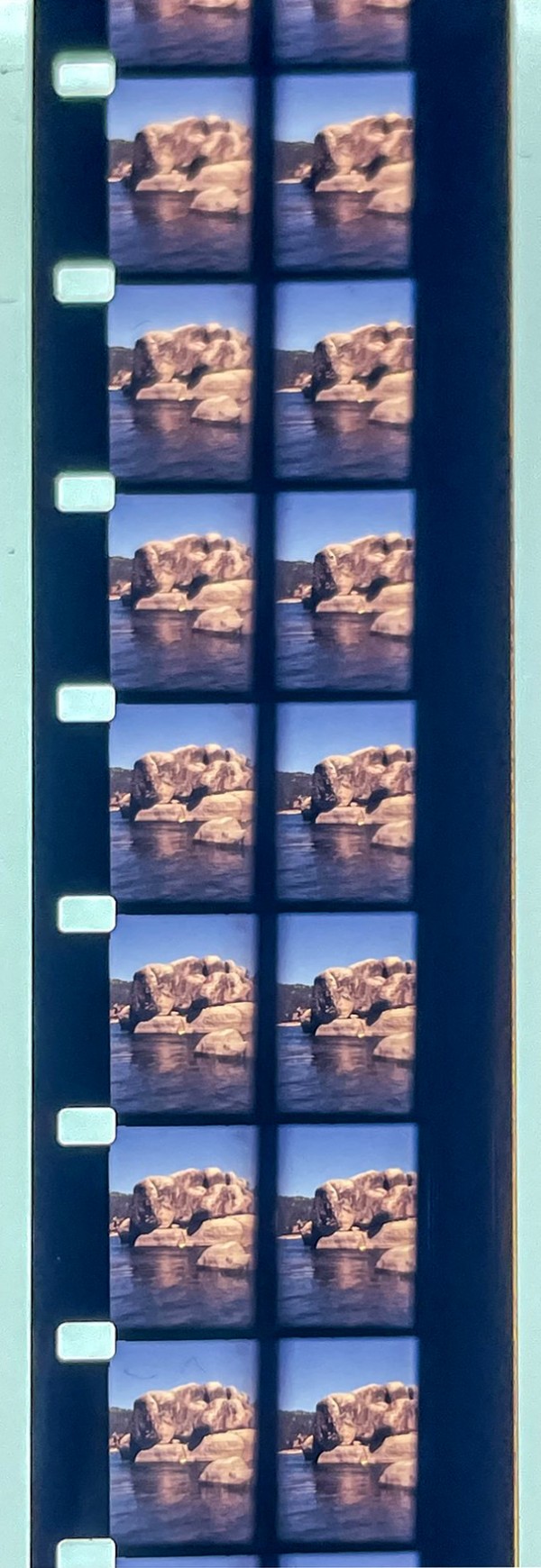
16mm Elgeet 3-D footage shot in the 1980s. The left- and right-eye images were recorded on the film, side-by-side within the standard 16mm frame. As a result, each image was taller than it was wide.
Courtesy of Stu Weisbuch.
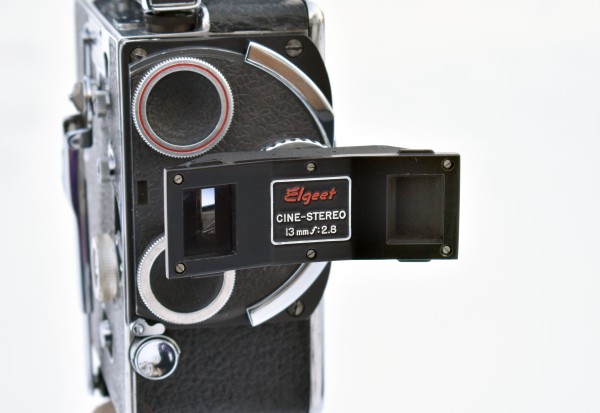
Elgeet Cine-Stereo lens attachment, mounted on a Bolex H16 camera
Courtesy of Hillary Hess.
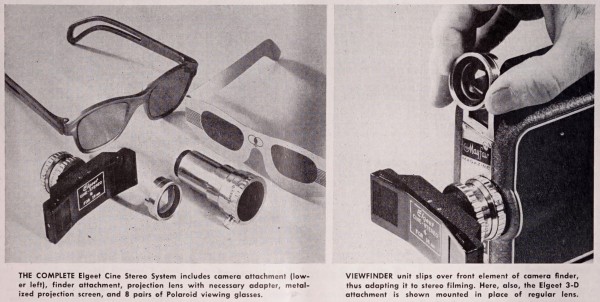
The Elgeet Cine-Stereo System and accessories.
Forbes, John (1953). “Elgeet Stereo Attachments Fit Most 16mm Cameras and Projectors”. American Cinematographer, 34:8 (August): p. 384.
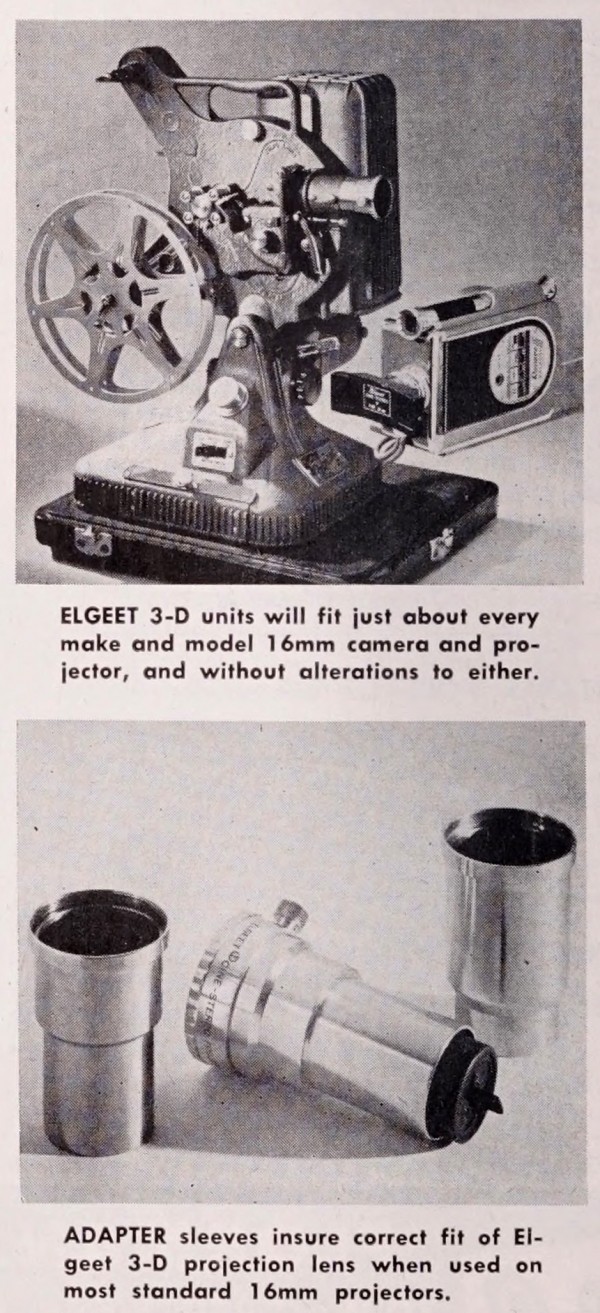
The Elgeet Cine-Stereo projection lenses and adapter sleeves.
References
Elgeet Optical Company (1953). Operating Instructions for Elgeet Stereo System. Rochester, NY: Elgeet.
Forbes, John (1953). “Elgeet Stereo Attachments Fit Most 16mm Cameras and Projectors”. American Cinematographer, 34:8 (August): p. 384.
Hutchinson, David (1986). “Searching for 3-D”. CineMagic, 33 (Summer): pp. 18–24.
McKay, Herbert C. (1953). Report of the Elgeet Stereo System. Rochester, NY: Elgeet Optical Company.
Patents
Compare
Related entries
Author
Hillary Hess graduated from the Pennsylvania State University with a BA degree in Film, having studied film history and production. She was featured in the book A Thousand Cuts (2016) by Dennis Bartok and Jeff Joseph, profiling the world of film collectors. Also an avid stereoscopy enthusiast, she has created the Facebook groups “Vintage Stereo Slides” and “3-D on Film”, which has served as a clearing house for sharing images and information pertaining to the historical use of stereoscopy in photochemical formats. As part of the 3-D Film Archive Team, Hillary has contributed commentaries for the Blu-ray releases of A*P*E (1976), Those Redheads From Seattle (1953) and Jivaro (1954). She has also created vintage stereo slide presentations for the 3-D Rarities II and Robot Monster (1953) Blu-rays from the 3-D Film Archive.
Hess, Hillary (2024). “Elgeet Cine-Stereo”. In James Layton (ed.), Film Atlas. www.filmatlas.com. Brussels: International Federation of Film Archives / Rochester, NY: George Eastman Museum.
